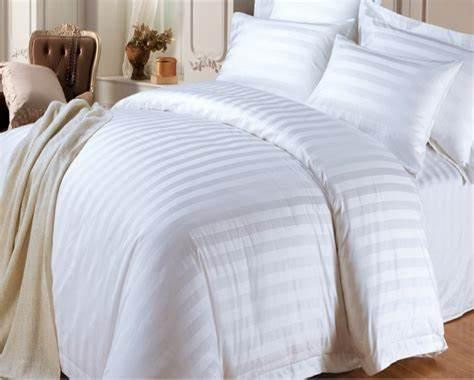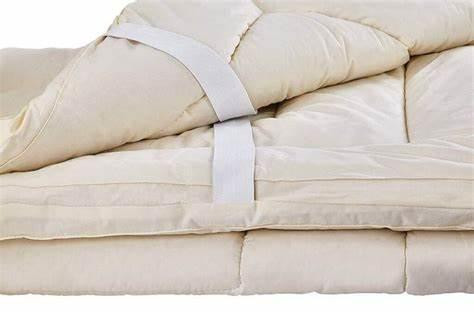When it comes to achieving a good night's sleep, the quality of your bed linen plays a pivotal role. Quality bed linen not only enhances your comfort but also adds a touch of luxury to your bedroom. In this comprehensive guide, we will explore the world of quality bed linen, from the types of materials to look for to the benefits of investing in superior bedding.
Types of Bed Linen
1. Cotton Bed Linen
Cotton is a popular choice for bed linen due to its breathability and durability. Egyptian and Pima cotton are known for their exceptional quality, providing a soft and luxurious feel against your skin.
2. Linen Bed Linen
Linen is a natural fabric that offers excellent moisture-wicking properties, making it ideal for hot sleepers. It has a unique texture that becomes softer with each wash, giving your bed a relaxed, rustic charm.
3. Silk Bed Linen
Silk bed linen is the epitome of luxury. It is smooth, hypoallergenic, and naturally regulates temperature, ensuring you stay cool in the summer and warm in the winter.
4. Microfiber Bed Linen
Microfiber bed linen is a budget-friendly option known for its easy maintenance and resistance to wrinkles. While not as luxurious as natural fibers, it provides comfort and durability at an affordable price.
The Benefits of Quality Bed Linen
5. Enhanced Comfort
Quality bed linen offers superior comfort, allowing you to sleep peacefully throughout the night. The softness and breathability of premium materials ensure you wake up feeling refreshed.
6. Durability
Investing in high-quality bed linen is a smart choice in the long run. It withstands the test of time, maintaining its color and texture, even after numerous washes.
7. Improved Sleep Quality
The right bed linen can significantly impact your sleep quality. Natural materials like cotton and linen help regulate your body temperature, ensuring a comfortable and uninterrupted slumber.
8. Aesthetic Appeal
Quality bed linen can transform the look of your bedroom. With a wide range of colors and designs available, you can easily find bedding that complements your décor and adds elegance to your space.
Choosing the Perfect Bed Linen
9. Thread Count Matters
A higher thread count typically indicates better quality. Look for bed linen with a thread count of at least 300 for a luxurious feel.
10. Weave Type
Sateen and percale weaves offer different textures. Sateen is smooth and lustrous, while percale is crisp and matte. Choose the one that suits your preference.
11. Hypoallergenic Options
If you suffer from allergies, consider hypoallergenic bed linen. Silk and some high-quality cotton options are naturally hypoallergenic.
12. Maintenance
Check the care instructions before purchasing. Some materials require special care, while others are easy to maintain.
Investing in Your Sleep
Quality bed linen is an investment in your sleep and overall well-being. It may come with a higher price tag, but the benefits far outweigh the cost.
Conclusion
In conclusion, quality bed linen is the key to a restful night's sleep and a beautiful bedroom. Whether you prefer the softness of cotton, the freshness of linen, or the opulence of silk, there's a perfect option for everyone. Invest in your sleep, and you'll wake up feeling refreshed and rejuvenated.
FAQs
1. How often should I replace my bed linen?
- It's advisable to replace your bed linen every 2-3 years to maintain its quality and hygiene.
2. Can I machine wash silk bed linen?
- Yes, silk bed linen can be machine washed on a gentle cycle with mild detergent. Always check the care label for specific instructions.
3. What is the best thread count for bed linen?
- A thread count of 300-500 is considered ideal for quality bed linen.
4. How do I keep my bed linen looking new?
- To keep your bed linen looking fresh, wash it in cold water, avoid overloading the washing machine, and use a gentle detergent.
5. Are there eco-friendly options for quality bed linen?
- Yes, you can find eco-friendly bed linen made from organic cotton or sustainable materials, contributing to a greener planet.






Comments